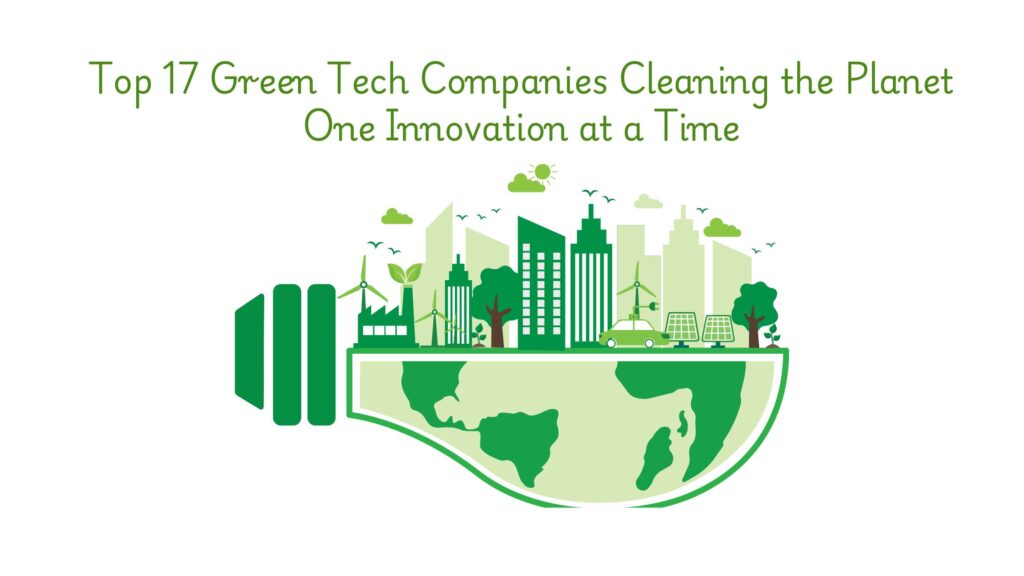The race to net zero isn’t just about switching energy sources. It’s about cleaning up the damage already done. That means pulling carbon out of the air, reinventing the materials we rely on, and filtering what flows through our factories, cities, and oceans.
According to Fortune Business Insights, the carbon capture and sequestration market alone is projected to grow from $4.5 billion in 2025 to over $14.5 billion by 2032. As industrial decarbonization accelerates, demand for clean manufacturing and atmospheric cleanup is surging.
But who’s really delivering the technology that can clean the planet at scale?
In this article, you’ll discover 17 of the top green tech companies leading in carbon capture, air purification, sustainable manufacturing, and closed-loop recycling. These aren’t just lab experiments; they’re solutions being deployed in the real world by these top green tech companies.
#1. ExxonMobil Low Carbon Solutions
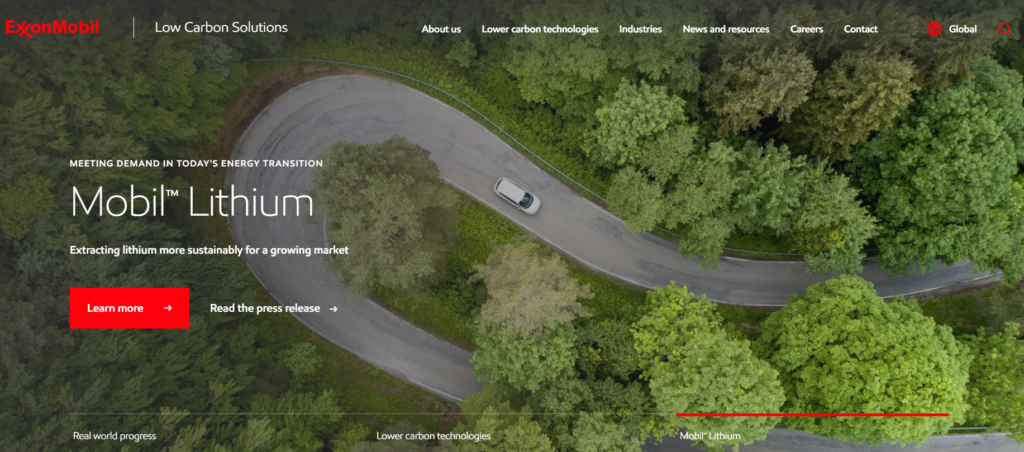
Source: ExxonMobil
ExxonMobil’s Low Carbon Solutions division focuses on advancing carbon capture and storage (CCS) technologies to reduce industrial CO₂ emissions. The company has captured more than 120 million metric tons of CO₂ to date.
Industry Impact
ExxonMobil’s CCS initiatives aim to decarbonize sectors such as manufacturing, power generation, and transportation by providing scalable solutions to reduce greenhouse gas emissions. Their projects aim to decarbonize industrial clusters, particularly along the U.S. Gulf Coast, positioning the region as a leader in low-carbon technologies.
Key Innovations
#1. Gulf Coast CCS Hub: Plans to develop a CO₂ pipeline network connecting various industrial emitters to permanent storage sites, with the potential to reduce emissions by over 100 million metric tons annually.
#2. Baytown Hydrogen Facility: Designing a large-scale low-carbon hydrogen plant capable of producing up to 1 billion cubic feet per day, with approximately 98% of associated CO₂ emissions captured and stored.
#3. Denbury Acquisition: Acquired Denbury Inc., providing ExxonMobil with the largest owned and operated CO₂ pipeline network in the United States, enhancing its carbon transportation and storage capabilities.
#2. Occidental Petroleum (Oxy)
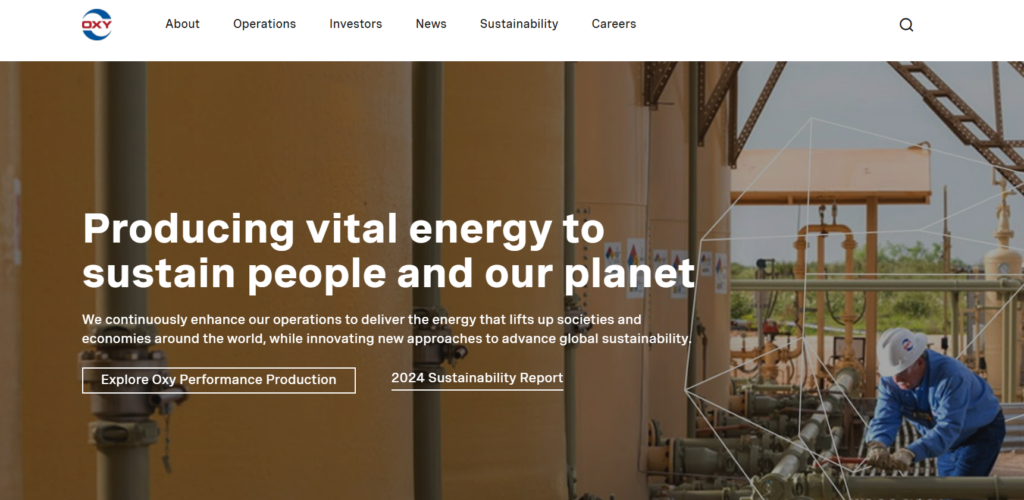
Source: Oxy
Oxy is building the world’s largest direct air capture (DAC) facility, Stratos, in Texas, aiming to remove 500,000 tons of CO₂ annually. Backed by its $1.1B acquisition of Carbon Engineering, Oxy combines advanced DAC tech with decades of carbon storage expertise.
Through its 1PointFive initiative, Oxy offers carbon removal services to hard-to-abate industries. The company plans to scale DAC to millions of tons annually, turning CO₂ removal into a new form of climate infrastructure.
Key Innovations
#1. Stratos DAC Plant: The world’s largest DAC project is under construction.
#2. Carbon Engineering Acquisition: Adds proven DAC tech to Oxy’s portfolio.
#3. 1PointFive Platform: Commercial hub for carbon removal and credit services.
#3. Climeworks
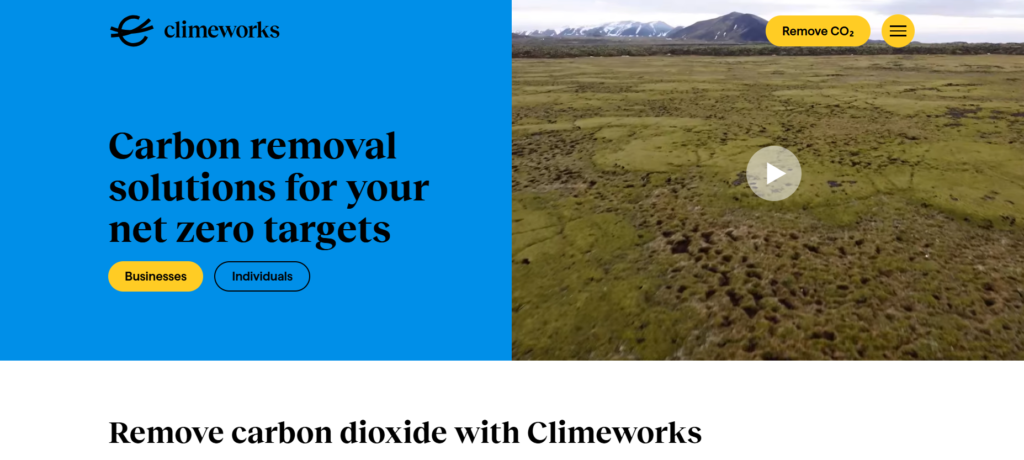
Source: Climeworks
Climeworks is a Swiss company leading the direct air capture (DAC) movement with permanent CO₂ removal. Its modular machines use renewable energy to pull CO₂ from the air and store it underground in Iceland through a partnership with Carbfix.
Climeworks was the first company to deliver third-party certified carbon removal and has clients like Microsoft and Stripe. Its newest plant, Mammoth, is designed to capture 36,000 tons of CO₂ annually.
Key Innovations
#1. Mammoth DAC Plant: One of the world’s largest operational DAC facilities.
#2. Carbfix Partnership: CO₂ mineralization and permanent underground storage.
#3. Verifiable Carbon Removal: First to offer audited, traceable CO₂ removal services.
#4. Carbon Engineering
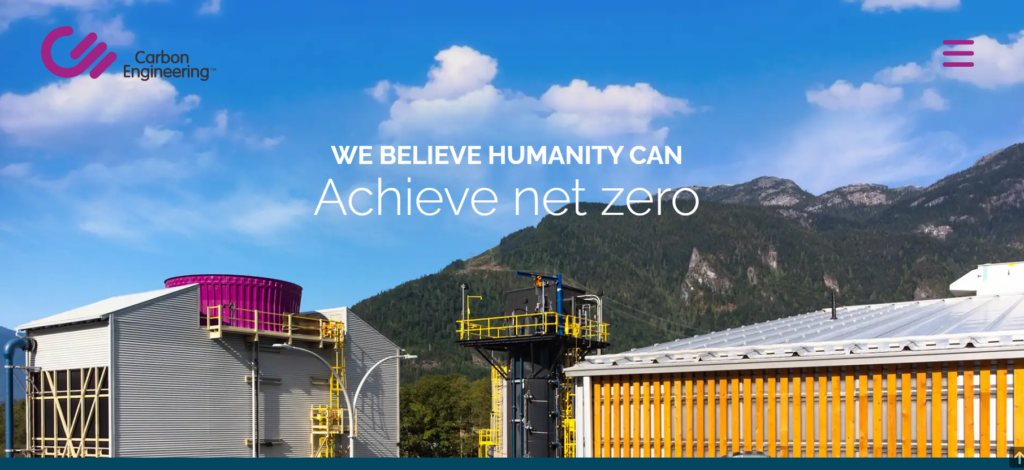
Source: Carbon Engineering
Carbon Engineering, based in Canada, specializes in Direct Air Capture (DAC) technology that extracts CO₂ directly from the atmosphere. Their process captures CO₂ for permanent storage or conversion into synthetic fuels. Since 2015, their pilot plant in British Columbia has been operational, demonstrating the scalability of DAC technology.
Key Innovations
#1. Direct Air Capture Technology: Captures CO₂ from ambient air for sequestration or fuel synthesis.
#2. Air to Fuels™: Converts captured CO₂ into synthetic, carbon-neutral fuels.
#3. Global Deployment Strategy: Collaborates with partners to deploy large-scale DAC facilities worldwide.
#5. LanzaTech
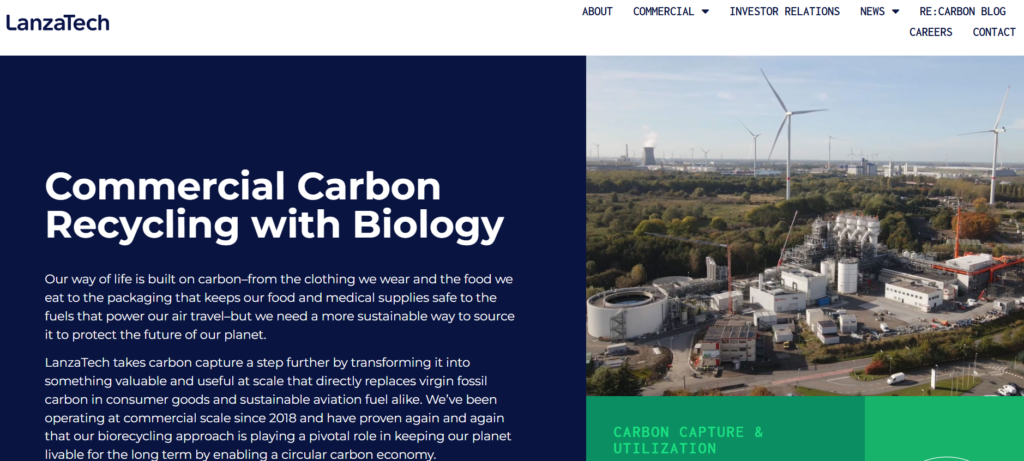
Source: Lanza Tech
LanzaTech is a US-based biotech company headquartered in Illinois, converting industrial emissions into sustainable fuels and chemicals. Using gas fermentation, its proprietary microbes transform CO₂, carbon monoxide, and other waste gases into ethanol and platform chemicals.
Its CarbonSmart™ ethanol powers everything from jet fuel to packaging. LanzaTech’s systems are already running commercially in China, India, and Belgium, proving that carbon recycling can work globally.
Key Innovations
#1. Gas Fermentation Reactors: Convert industrial emissions into fuel-grade ethanol.
#2. CarbonSmart™ Products: Used in packaging, aviation fuel, and textiles.
#3. Global Commercial Plants: Full-scale deployments with steel and refinery partners.
#6. Svante

Source: Svante
Svante is a Canada-based company developing solid sorbent-based carbon capture systems for industrial settings. Its patented filters use nano-structured materials to capture CO₂ directly from flue gas with fast adsorption and release cycles.
The company partners with cement, hydrogen, and steel producers to retrofit plants with modular CO₂ capture units. Backed by major players like Chevron and Samsung, Svante aims to reduce the cost of industrial decarbonization.
Key Innovations
#1. Solid Sorbent Filters: Capture CO₂ with high efficiency.
#2. VeloxoTherm™ Process: Enables rapid cycling for cost-effective capture.
#3. Commercial Pilot Projects: Real-world deployments across North America.
#7. CarbonCure Technologies
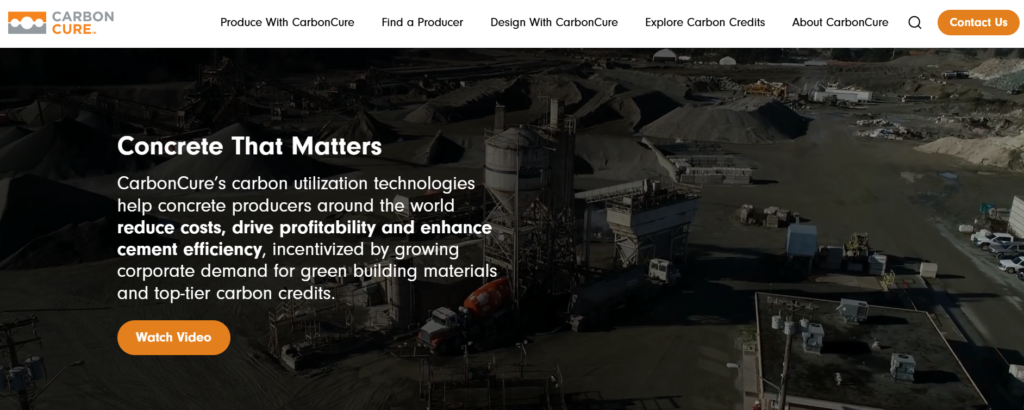
Source: Carbon Cure
CarbonCure is a Canada-based climate tech company that injects captured CO₂ into fresh concrete, where it mineralizes and becomes permanently embedded. This not only reduces emissions but also strengthens the concrete, allowing producers to use less cement per batch.
Used in over 700 concrete plants worldwide, CarbonCure’s technology has already removed tens of thousands of metric tons of CO₂ from the supply chain. It’s a practical, scalable solution in one of the world’s highest-emitting industries.
Key Innovations
#1. CO₂ Mineralization in Concrete: Permanent carbon storage in building materials.
#2. Ready Mix and Precast Solutions: Deployed across real-world infrastructure projects.
#3. Global Adoption: Commercial partnerships with leading concrete producers.
#8. Calix Limited
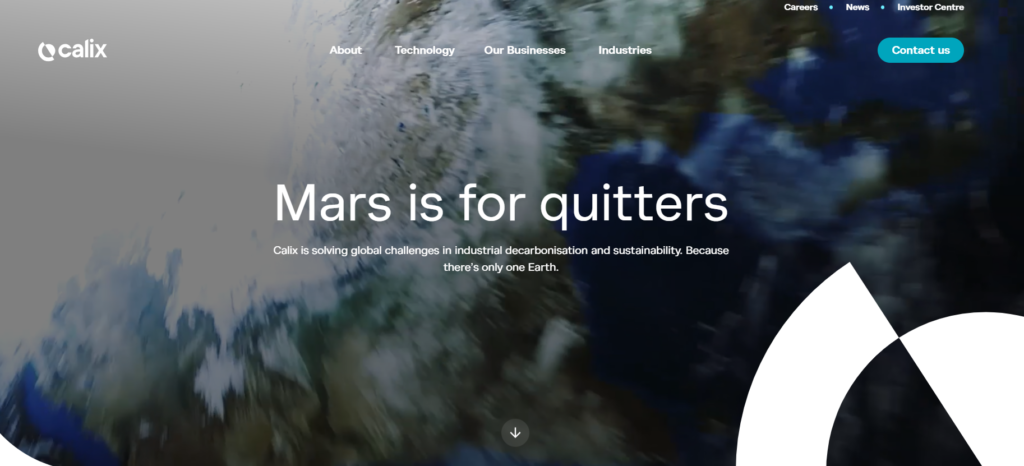
Source: Calix
Calix Limited is an Australian environmental technology company addressing industrial decarbonization and sustainability challenges. Their patented kiln technology enables efficient CO₂ capture while processing minerals like lime and cement. Calix’s LEILAC (Low Emissions Intensity Lime and Cement) project aims to reduce emissions in these high-carbon industries.
Key Innovations
#1. LEILAC Technology: Direct separation of CO₂ emissions in cement and lime production.
#2. Sustainable Processing: Electrification of mineral processing to reduce carbon footprint.
#3. Advanced Batteries: Development of materials for next-generation batteries.
#9. Carbon Clean
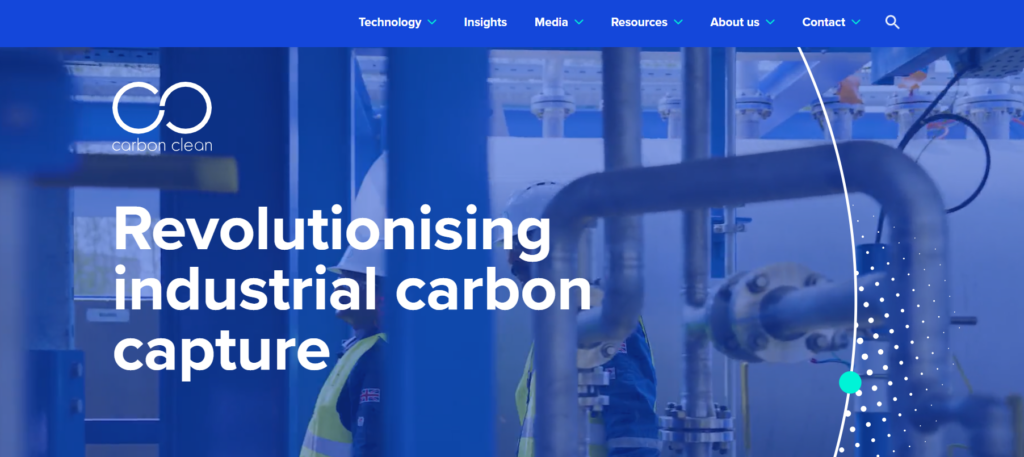
Source: Carbon Clean
Carbon Clean, based in the United Kingdom, provides modular carbon capture solutions for heavy industries. Their technology captures CO₂ emissions from industrial processes, which can then be stored or utilized. Carbon Clean’s modular systems are designed for quick deployment and integration with existing infrastructure.
Key Innovations
#1. Modular Carbon Capture Units: Compact systems for efficient CO₂ capture.
#2. Rapid Deployment: Quick installation and integration into existing industrial sites.
#3. Cost-Effective Solutions: Reduces the cost of carbon capture for industries.
#10. Aker Carbon Capture

Source: Aker Carbon Capture
Aker Carbon Capture is a Norway-based climate tech company focused on scalable carbon capture for hard-to-abate industries like cement, hydrogen, and waste-to-energy. A spinoff of Aker ASA, it delivers modular, ready-to-deploy plants that can capture up to 400,000 tons of CO₂ annually per unit.
The company is active in multiple European industrial projects and is building one of the world’s first large-scale carbon capture facilities for a cement plant in Brevik. Its strategy blends low-cost deployment with high energy efficiency, enabling faster decarbonization.
Key Innovations
#1. Just Catch™: Modular CO₂ capture units for industrial emitters.
#2. Carbon Capture as a Service: Pay-as-you-go model to simplify adoption.
#3. Brevik CCS Project: World-first full-scale capture at a cement plant.
#11. NET Power
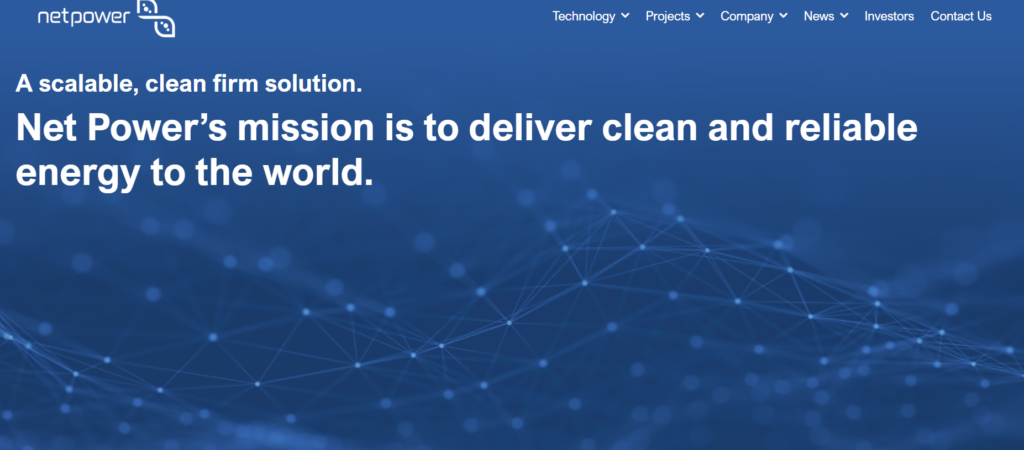
Source: Net Power
NET Power, based in North Carolina, is reinventing natural gas power generation by capturing CO₂ as part of its core cycle. Using the Allam-Fetvedt Cycle burns natural gas with oxygen instead of air, producing electricity, water, and pure CO₂ for storage or reuse.
Backed by major partners like Baker Hughes and Constellation, NET Power’s approach eliminates flue gas emissions without relying on add-on carbon capture. A commercial-scale plant is under development in Texas, with more projects planned globally.
Key Innovations
#1. Allam-Fetvedt Cycle: CO₂ becomes part of the energy process, not waste.
#2. La Porte Demo Facility: Validated 50MW system in Texas.
#3. 2026 Utility-Scale Plant: First grid-connected zero-emissions gas plant.
#12. Carbfix
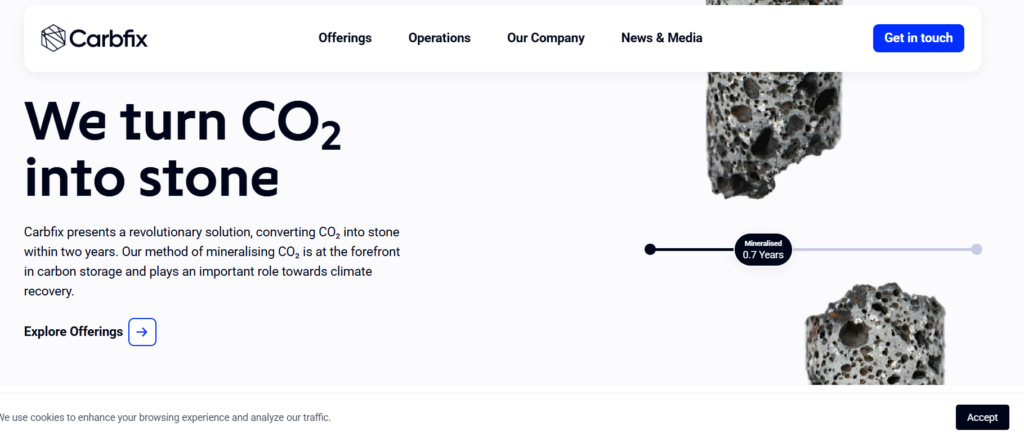
Source: Carbfix
Carbfix, based in Iceland, turns captured CO₂ into stone by injecting it into underground basalt rock formations. Founded in 2007 through a partnership with Reykjavík Energy, Carbfix accelerates natural mineralization, permanently locking away carbon in less than two years.
It works with geothermal plants and industrial partners to combine capture and storage at the source. Carbfix has already sequestered over 90,000 tons of CO₂ and is expanding to other volcanic regions.
Key Innovations
#1. In-Situ Mineralization: Injects CO₂ and water into basalt to form rock.
#2. Coda Terminal Project: Large-scale storage hub for Europe-bound CO₂.
#3. Geothermal Integration: Paired with clean power plants for circular decarbonization.
#13. CarbonFree
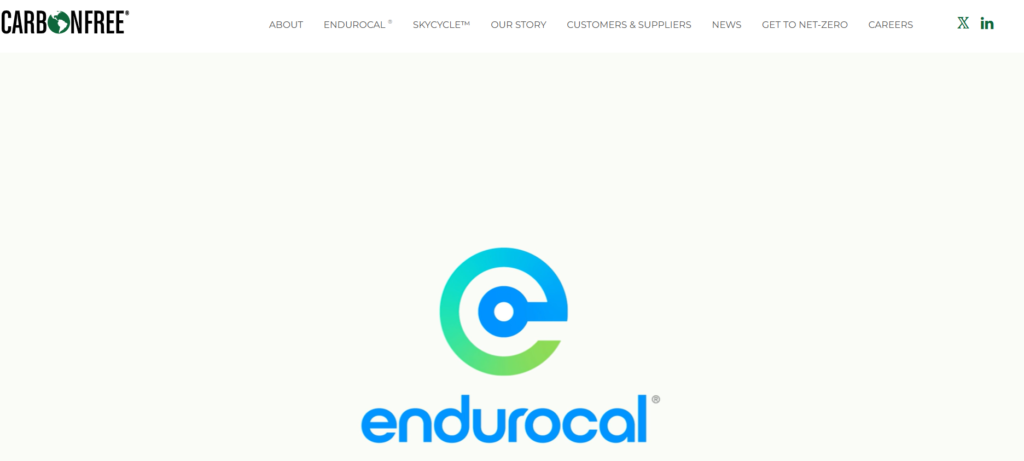
Source: Carbonfree
CarbonFree, headquartered in San Antonio, Texas, converts industrial CO₂ into valuable commercial products. Its SkyCycle™ technology captures CO₂ from flue gases and transforms it into calcium carbonate and other chemicals like hydrochloric acid and soda ash.
Rather than store carbon, CarbonFree embeds it into everyday materials. Its process supports hard-to-abate sectors like steel and cement without disrupting production workflows.
Key Innovations
#1. SkyCycle™: Converts CO₂ into solid chemicals for resale.
#2. Permanently Mineralized Products: Embeds CO₂ into useful compounds.
#3. Industrial Integration: Retrofits carbon-heavy industries without major overhaul.
#14. Prometheus Fuels

Source: Prometheus
Prometheus Fuels, based in California, transforms atmospheric CO₂ into carbon-neutral gasoline, diesel, and jet fuel. Their process uses water, electricity, and air to create hydrocarbons without crude oil, offering a fossil-free fuel alternative.
The company uses advanced electrochemical cells and nanotechnology to improve efficiency. Backed by BMW and Y Combinator, Prometheus aims to drop in and replace fossil fuels with fully carbon-recycled alternatives.
Key Innovations
#1. Direct Fuel from Air: Turns captured CO₂ into usable fuels.
#2. Carbon Nanotube Filters: Extract alcohols from water with high precision.
#3. Electrofuel Infrastructure: Designed for compatibility with today’s engines.
#15. Heirloom Carbon
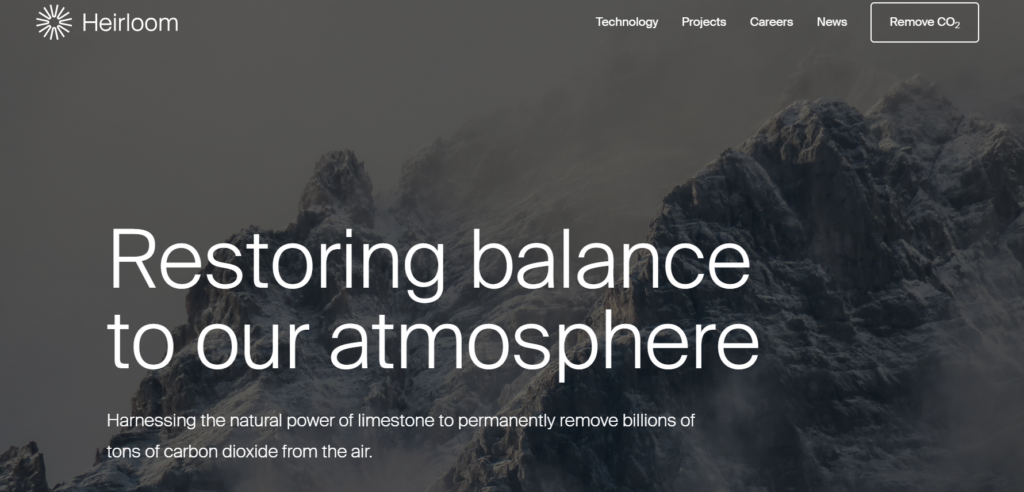
Source: Heirloom
Heirloom, a California-based startup, accelerates natural carbon mineralization by spreading processed limestone that reabsorbs CO₂ from the air. The re-carbonated material is then collected and stored underground or reused in industry.
Their low-energy process requires no fans or vacuum equipment, making it cost-effective and scalable. Heirloom is backed by Breakthrough Energy and has partnered with Microsoft to provide carbon removal credits.
Key Innovations
#1. Natural Mineral Loop: Uses limestone to absorb CO₂ passively.
#2. Modular Deployment: Easy to scale and site globally.
#3. Permanent Carbon Removal: Certified long-term CO₂ storage.
.
#16. Twelve
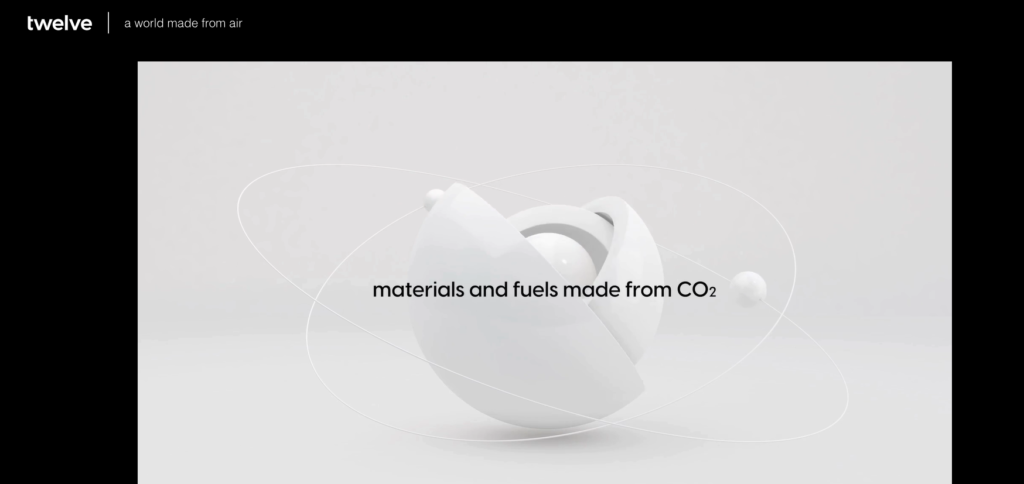
Source: Twelve
Twelve, based in Berkeley, California, uses electrochemical reactors to transform CO₂ into industrial chemicals and materials, including plastics, detergents, and aviation fuel. Their technology replaces petrochemicals with air-based carbon.
Their reactor, called O12, runs on renewable electricity and water. Twelve is working with Mercedes-Benz, Shopify, and the US Air Force to bring air-to-product manufacturing to scale.
Key Innovations
#1. O12 Reactor: Converts CO₂ into carbon-based chemicals.
#2. AirJet Fuel: Sustainable aviation fuel from CO₂.
#3. AirCarbon Plastics: Polymers made from emissions, not oil.
#17. Spiritus
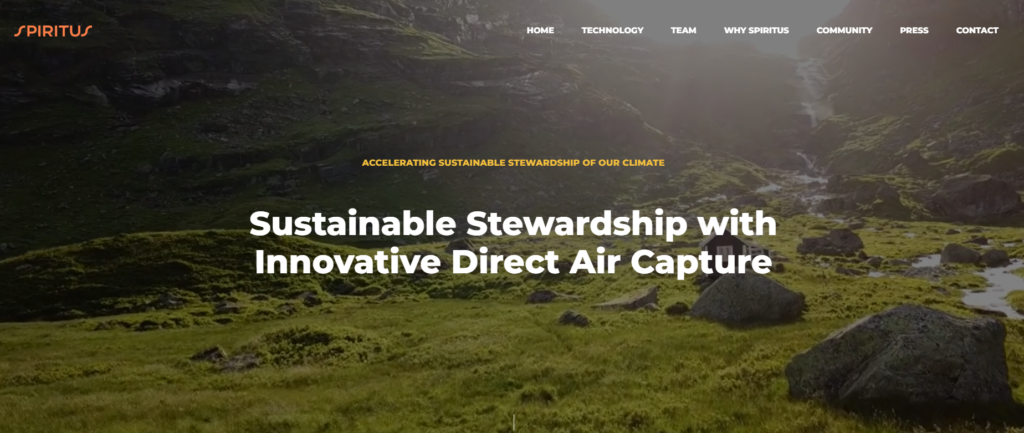
Source: Spiritus
Spiritus, a new US startup, is developing “carbon orchards”, open-air DAC systems that use ultra-light sorbents to collect CO₂ passively. Unlike fan-driven DACs, Spiritus uses natural airflow and low-energy processes to reduce costs.
Its system is built for scale and simplicity. Spiritus claims it can remove CO₂ for under $100/ton and has caught the attention of climate investors and government buyers.
Key Innovations
#1. Carbon Orchard Design: Passive air flow replaces energy-intensive fans.
#2. Ultra-Light Sorbents: Advanced material tech to boost CO₂ absorption.
#3. Modular Field Units: Designed for fast, low-cost deployment.
Top Green Tech Companies Are Building More Than Buzzwords
From mineralizing carbon in concrete to pulling CO₂ straight from the sky, the top green tech companies are building the future of industrial decarbonization. These top green tech companies are not just reducing emissions; they’re reversing them.
But in a fast-moving space like green tech, how do you know which companies are leading with real innovation and which are just riding the wave?
That’s where GlobalPatentSearch.ai gives you an edge. This AI-powered tool helps you:
1. Identify related patents using idea-level descriptions.
2. Map green tech innovation timelines using priority dates.
3. Break down specific patent features and match them to existing technologies.
Want to track the real leaders among top green tech companies? Start exploring with GlobalPatentSearch.ai.
Recommended Read
Top 29 Generative AI Companies Transforming Industries in 2025

